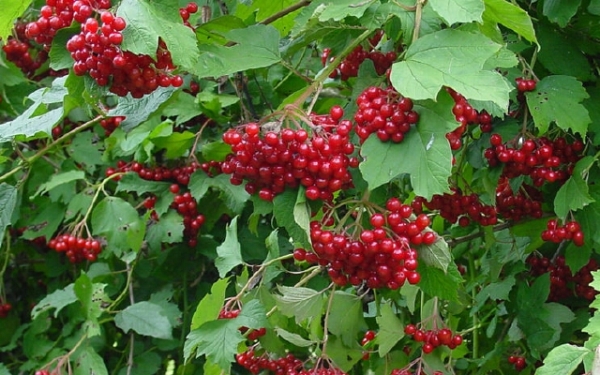Viburnum! Where did the name of this medicinal plant come from and what does it look like? According to one of the versions the berries of the shrub become tasty and sweet after the frost has “pierced” them. Let's take a closer look at ordinary viburnum, its varieties and species, which are described below.
Table of contents
Kalina: what kind of plant, tree or shrub?
Kalina ordinary - shrub, the fruits of which for many centuries were used as food by our ancestors. In our harsh conditions, it was an additional source of vitamins, especially in late autumn, when the period of fruiting and ripening of other berry crops was fully completed by this time. Eat bright red berries began after the first frost.when the bitter astringent taste disappeared or the silt became smaller.

Great-grandmothers had a sign: if you put a sprig of blossoming viburnum in the bedroom, then even a tired husband, after a hard day of work, will love more.
With success used features of the root system of the berry crop. She is powerful and branched out. As a result, solid turf was formed in the upper soil layer. therefore Kalina was often planted in the yard areas where the soil was most eroded. (hills, slopes, ravines).
Kalina ordinary - unpretentious plant, but for its successful cultivation at the dacha, you need to know some tricks. For example, if in natural habitat viburnum likes wet placesthen in cultivated landings, if possible, it is better to give preference to dry soils with low groundwater levels.
What does a hedge look like?
For a long time, rural residents grew viburnum around the perimeter of the site. The result was a dense hedge that hid the house from prying eyes. Modern owners can use this experience of ancestors. Now, with a variety of garden tools, an environmental fence can be formed. any height and shape. After all, viburnum - a universal plant.

It is well combined with various trees and shrubs, so you can use both group plantings and single. Not bad land Kalina on areas with slopes and slopes to strengthen themwhile using the biological feature of a well-developed rhizome.
Description of Viburnum ordinary: the benefits and harm
Viburnum berries have healing properties for various diseases. Fruit contains large amounts of vitamin C, twice as much as in citrus, in 100 grams - the daily dose needed by a person.
The bark of the plant has healing properties. It contains ether-like, tannic and resinous substances.from which various organic acids and chemical compounds are formed during hydrolysis. This huge variety of chemical composition of viburnum fruit bark forms the pharmacological properties of the plant.
Benefit:
- Lowers level cholesterol;
- Possesses expectorant effect;
- Improves overall condition with heart disease (hypertension, ischemic heart disease, atherosclerosis);
- Helps with skin diseases (eczema, carbunculosis);
- Increases production of bile (hepatitis, cholecystitis);
- Increases tone uterine musculature;
- Used for disease diabetes mellitus;
- Improves digestion;
- Use with heavy menstruation;
- Reduces swelling (heart, kidney);
- Lowers arterial pressure.
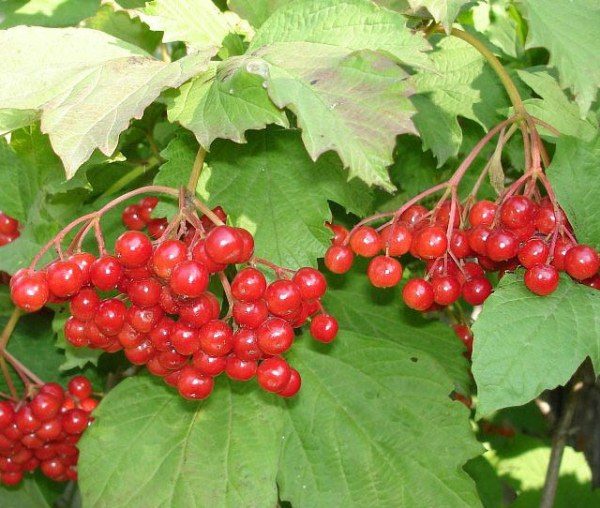
Contraindications:
- Low pressure;
- Elevated blood clotting;
- Individual intolerance;
- Exists risk of developing fetal abnormalitiestherefore, pregnant women should stop using this plant.
Types and varieties of red and black berries
Viburnum has a huge number of species - about 200. There are viburnum with black fruits, there are forms in the form of evergreen shrubs. Viburnum is common in our latitudes. Thanks to breeding, cultivated fruit varieties surpass wild-growing in yield, size of berries and chemical composition.
Zhalobovskaya
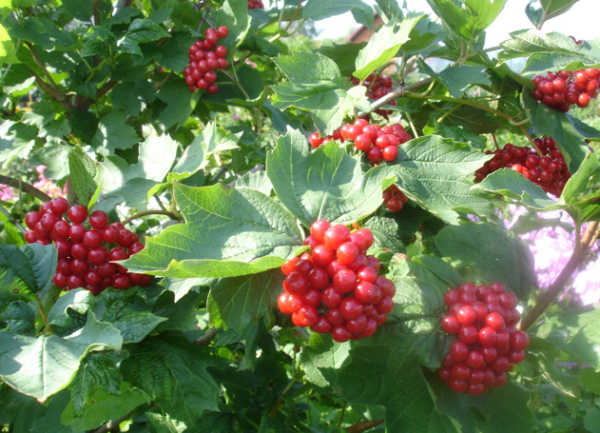
Good variety for home use. Suitable for both storage and processing. Pulp will delight the minimum presence of bitterness, yield 5 - 6 kg from the bush.
Vigorovskaya
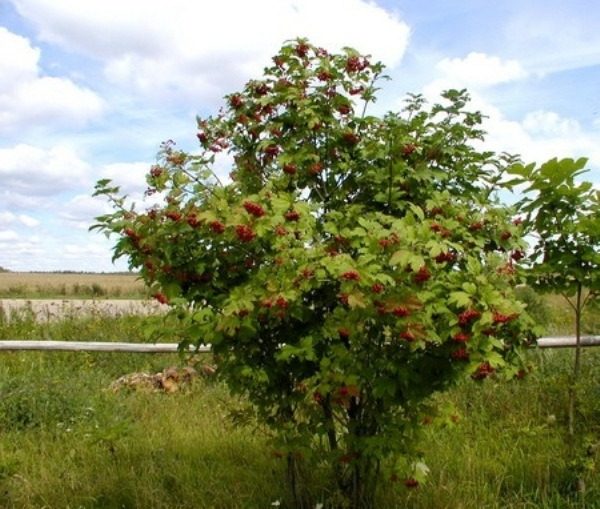
The berries are bright red in color, having the shape of a pea, weighing 0.5 g. The bitter taste, after processing, becomes slightly bitter. The plant grows to 3m. Productivity 6 - 10 kg from a bush.
Ulgen
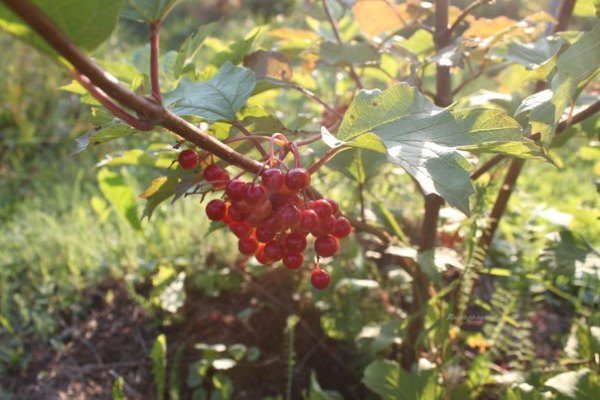
The universal grade, differs in late term of maturing. Sweet-bitter to taste berries, well stored and well processed. Yield from the bush 5 - 8 kg.
Taiga rubies
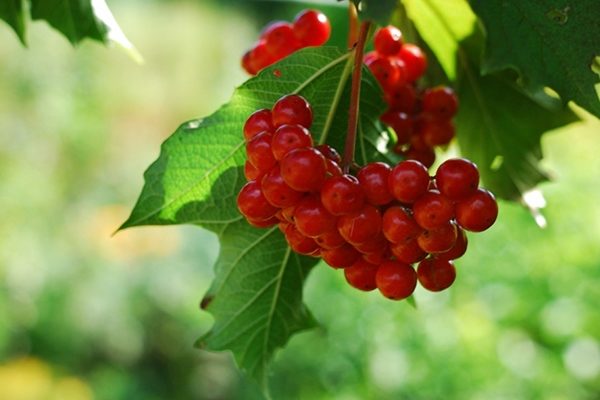
Variety of annual fruiting, winter-hardy. Berries attract attention with their unusual dark ruby color. Average yield per bush 7 - 8 kg.
Zarnitsa
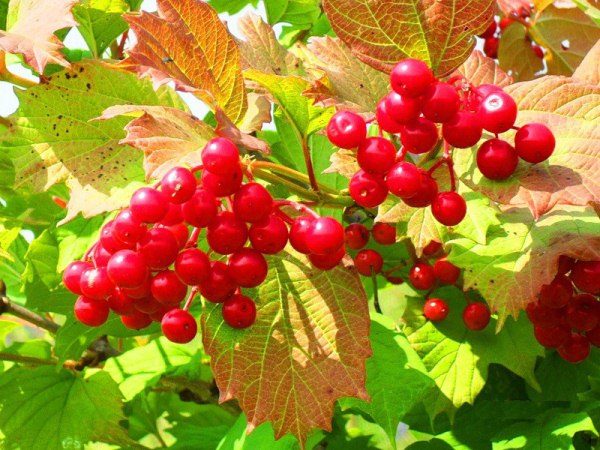
The variety is winter hardy, stable yield for 20 years. The color of the berries is bright red. Average yield per bush 6 kg.
Planting and Care Rules
All of these varieties can be successfully grown at the cottages in the suburbs. This plant south of 61 is cultivated in Western Siberia.about northern latitude in eastern Siberia grows in the basins of the Yenisei and Angara rivers.
Planted viburnum in the spring or autumn. Autumn planting is no different from spring. Before you start planting this medicinal plant you need to pay attention to the quality of planting material. Visually we look at the absence of visible defects. Buy for planting need 2 - 3 summer seedlings.
We dig a hole for 2 bayonet spade wide and 1.5 depth.It is important that on the surface of our cutting there should be at least 3 well developed buds. The bush will delight you with the first healing crop already on 3 - 4 years. Easy care. In the autumn it will not be superfluous to feed manure, if you can’t get this valuable biological material, you can successfully apply potato peelings, tea leaves, banana skins.
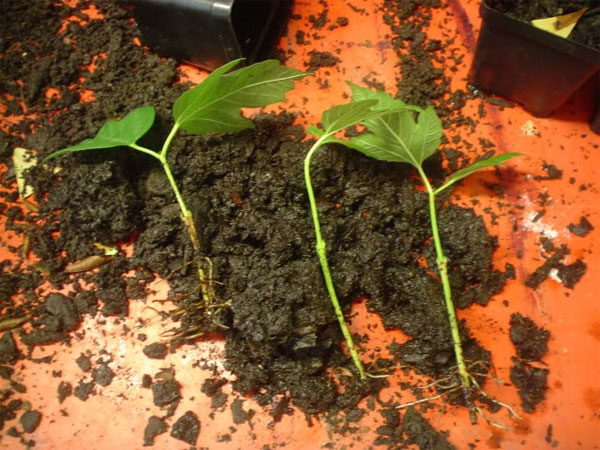
These seemingly simple elements will enrich the soil with minerals. In our technological age, it is better to use as little chemistry as possible at your summer cottage. But if not at all, then to the store: there is the widest choice of complex fertilizing and fertilizer. Usually in our climate plants do not need watering.. But in the temperate zone is a dry summer. In this case, the caring owner should not forget about this unpretentious culture.
Breeding
There are several ways to reproduce our healing bush. They can easily be found on the Internet. Consider one of the most common ways that any summer resident can handle on his site. We need to take the lower branch of the bush, tilt and prikopat in one place. The tubercle must be reliable and well rammed. In autumn or next spring, when the root system of the new bush is formed, we separate it from the main plant. Everything, you can plant yourself or share with your neighbors.
Collection and harvesting for the winter
Kalina, depending on the variety, is cleaned depending on the variety in September-October. Brushes with berries cut off with secateurs. Fruits in brushes stored in the refrigerator or freezer. Viburnum produces fragrant jam, jam, delicious juice and kvass.
Healing juice
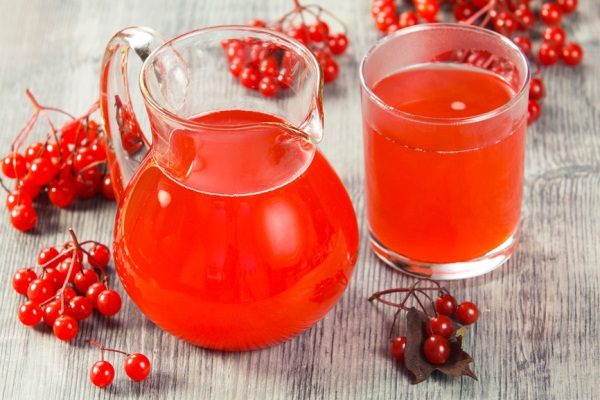
Recipe number 1. Take 1 kg of berries and squeeze the juice. Pulp pour a glass of water, boil for 5 minutes. Then strain and connect with the juice. Add 200 g sugar to the mixture, bring to a boil and pour into a container. Hermetically capped.
Fruit jelly from berries of viburnum and apples
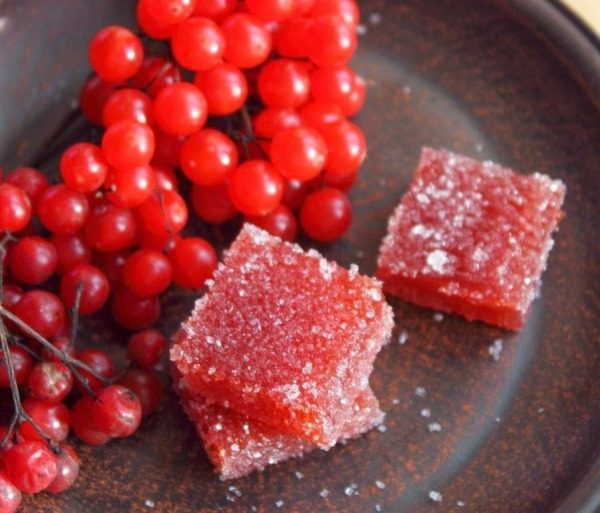
Recipe number 2. It is necessary to take apples and berries of viburnum, wash, cook separately to a soft consistency, mix and rub through a sieve. In the resulting product pour sugar in the ratio of one to one and boil over low heat, stirring occasionally until a thick mass is formed. When this mass is behind the spoon and the bottom of the dishes - the dish is ready.
The resulting marmalade pour into a shallow dish, let the product cool and dry it in the oven at a temperature 60aboutWITH.
Conclusion
Kalina ordinary has useful properties in such quantity that it can compete with many other gifts of nature. Summer residents and gardeners should carefully look at this healing and unpretentious plant. After all this healing culture will benefit the whole family, especially during the cold period, and for better preservation of valuable qualities you need to use the freezer.
